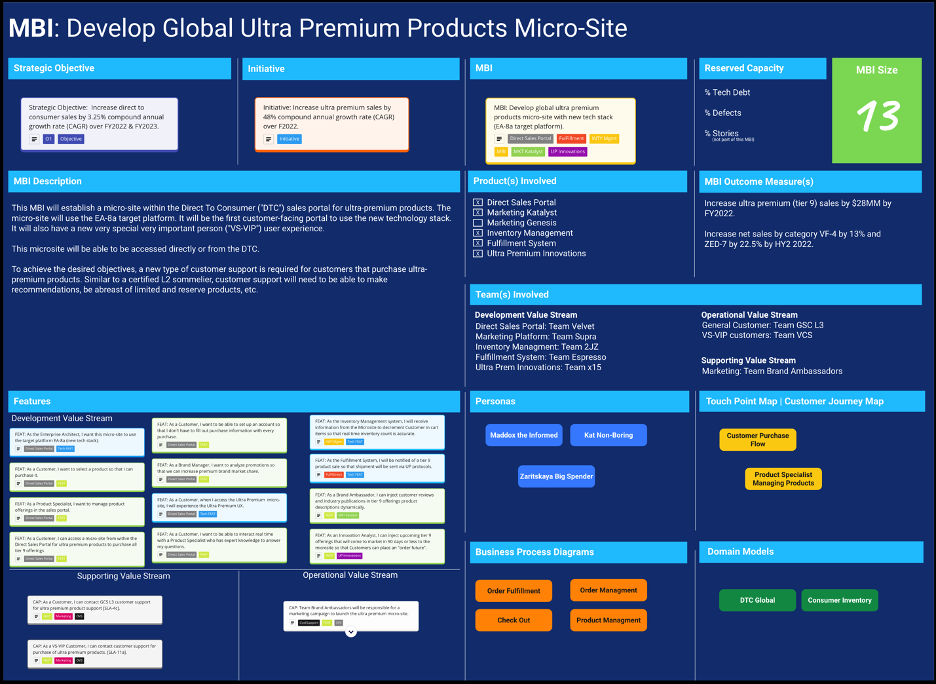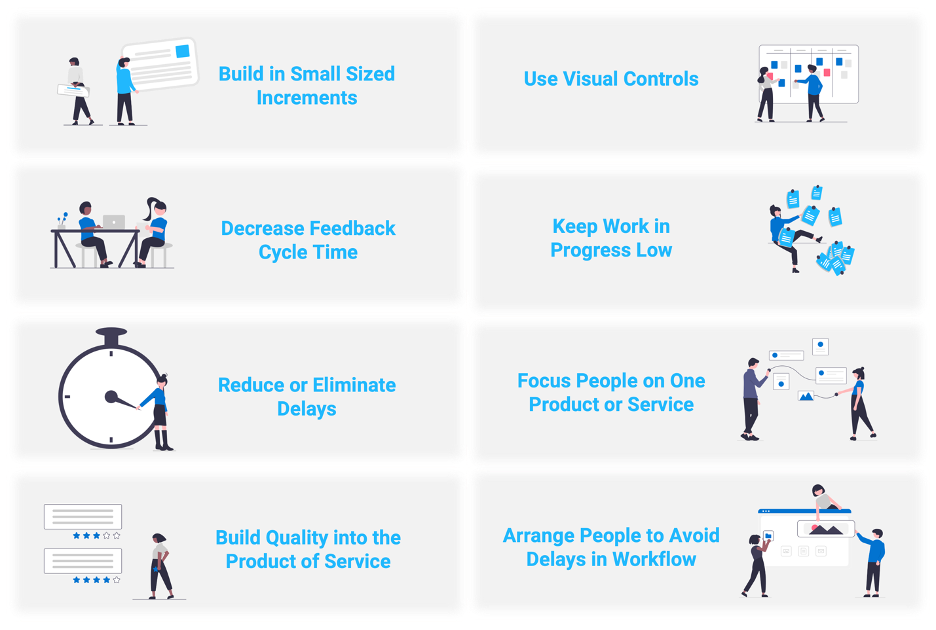In this post, our third in a series where we’ll investigate the treatment of value stream management (VSM) in the context of industry frameworks, Joshua Barnes has a look at Disciplined Agile (DA™).
DA’s value proposition is an enabler for organizational agility, transformation, and ways of working. It is not a framework. It does not prescribe an approach for teams or organizations to adopt and follow. It is different. It is more of a toolbox that powers designing fit-for-purpose ways of working or evolving ways of working based on frameworks such as Scrum and scaled approaches. It solves the problem of not one size fits all.
Delivering value continues to increase in complexity and is driven more than ever by digital transformations. The result is a growing emphasis on dependency management and coordination - but that will only get you so far. Value stream management in DA focuses on improving the environment (or system) where the work is done. In my opinion and experience, the following three components are at the center of DA’s approach:
- Idealized value stream – from idea/request to consumable value.
- Minimum Business Increment (MBI) – the smallest quantity of work we can do, which provides value.
- Factors for effective value streams – improving the flow of value delivery.
Idealized Value Stream
The idealized value stream is a strategy connecting ideas (customer or stakeholder requests) through all the work required so that a customer can consume value, whether external or internal. It connects value-adding activities to the organization’s strategic objectives, ensuring alignment. Figure 1 is a visual representation of the idealized value stream.

Figure 1: Disciplined Agile’s Idealized Value Stream
At the highest level, organizational strategic objectives connect purpose to performance. Next, each value stream has its strategic objectives, contributing to achieving one or more organization-wide objectives. This connection is the enabler of strategic alignment. Objectives are progressively decomposed from here into initiatives and then minimum business increments (MBIs). Depending on the organization, objectives may be future-facing from a year to many years. Initiatives from six to eighteen months. MBIs from weeks to many months. This helps deliver the strategic outcomes against which you can measure performance.
The idealized value stream contains two major segments. The business flow side is where investment decisions are made. Here we identify what value is most important, balanced with the capacity in the value stream, and what work we can start and finish without it being interrupted. The implementation flow side is where we translate the request (next business increment) into consumable value. Within this flow, we attend to all work, the value-adding activities, which are needed for the value to be consumable. This includes development, supporting (marketing, legal, procurement, etc.), and operational. An essential component of the idealized value stream is the minimum business increment.
Minimum Business Increment (MBI)
The Minimum Business Increment, “MBI,” is a strategy for identifying the smallest amount of value a customer can benefit from. They are utilized for enhancing and improving an existing product. Therefore, it is an investment for a return. This is different from a Minimum Viable Product (MVP) investment for discovery. MVPs are innovation work for validating hypotheses, can an idea be productized or monetized.
The MBI is a container of information – bridging communication through the value stream. It includes identifying the value-adding flow-oriented activities from the:
- Development Value Stream – delivery/agile team(s) enhancing or maintaining a product or service.
- Support Value Stream – marketing, sales, legal, people management, procurement, etc.
- Operational Value Stream – customer support, people in the field, or a physical location (branch, store location, etc.).
MBIs are a crucial enabler in improving the flow of value delivery from a value stream. This is how we transition to understanding the amount of business value we can build and put in the hands of our customers, where they consume it.
- Focuses on the smallest next thing we can do that provides value to a customer.
- Ensures completeness to deliver that value – all value-adding work – NOT just development.
- Easier to sequence the work as the identified increments are the smallest we can do.
- Understand the capacity of the people that will do the work to start AND complete it – WIP management.
- Provide clarity of what to align around.
There is no prescribed format for writing MBIs. However, I recommend using a business canvas format as this has proven a very effective communication vehicle at many organizations we have worked with. Figure 2 shows a complex MBI from our VSM for Leadership and Project Professionals workshop. It is the first of many business increments to release a new micro-site on a new technology stack for a consumer product goods company. It requires heavy lifting in a direct-to-consumer sales portal and enhancements to other digital products, such as inventory management, fulfillment, and marketing platforms.
We use this example as the far end of the spectrum for a typical MBI. This increment is both complex and high effort. At the other end of the spectrum, a less complex MBI example would be for a single team enhancing a single product with low effort (weeks of capacity vs. months).
This example shows that all the work identified for this increment to be consumable has been captured. Enhancements in the digital products, which multiple teams will need to complete, are in the development value stream. Work from the supporting value stream, which a marketing team will need to complete, is identified. Similarly, changes in the operational value stream for customer support are identified.

Figure 2: Complex MBI Example Business Canvas Format
The business canvas format is modular; it provides containers of relevant information. The information that provides benefits will vary for each organization and each value stream in an organization. Many types of information may be considered in creating templates and examples for usage.
Factors for Effective Value Streams
DA’s value stream management approach centers on where the work gets done. It uses factors to identify options for increasing the flow of value by creating great environments, enabling delivery teams, supporting, and operational people to focus on achieving the vision of leadership.
There are eight seminal factors improving flow shown in figure three:

Figure 3: Factors for Effective Value Streams
These factors have a reciprocal relationship with each other. Each on its own may improve flow, but combined, there is often a multiplier effect. Many options to improve a factor (strategies, practices, and techniques) can be selected to form an improvement backlog.
How to Learn More
Use the QR code below to learn more about Disciplined Agile’s value stream management approach. All Value Stream Management Consortium members receive a discount for our value stream management training courses.

If there is another framework you'd like to see covered, feel free to suggest it in the comments.
On the same subject, don't hesitate to consult our previous posts in this series:
- VSM and Industry Frameworks: ITIL4
- VSM and Industry Frameworks: SAFe 6.0
- Value Stream Management and Other Ways of Working Frameworks
Disciplined Agile™ and DA™ are marks of the Project Management Institute, Inc.
Picture Credits: Stackie Jia on Unsplash.

Joshua Barnes
Joshua Barnes is the founder of Process Mentors; a consultancy focused on improving ways of working. Over the past two decades, Joshua and his staff have had a breadth of engagements, including culture change, increasing productivity while reducing risk and waste, and focusing on the fewest things that significantly impact people, performance, and outcomes. Joshua’s focus is Disciplined Agile and value stream and value delivery management, improving the environment in which delivery teams work, thus increasing the flow of value to customers. He is an international speaker, LinkedIn Learning author, host of several live stream series, and a published author.








Comments 0